14 of the deepest sinkholes on Earth
From China's Heavenly Pit, which stretches down 2,172 feet, to the Devil's Sinkhole in Texas that is home to three million bats — here are some of the world's deepest known sinkholes.
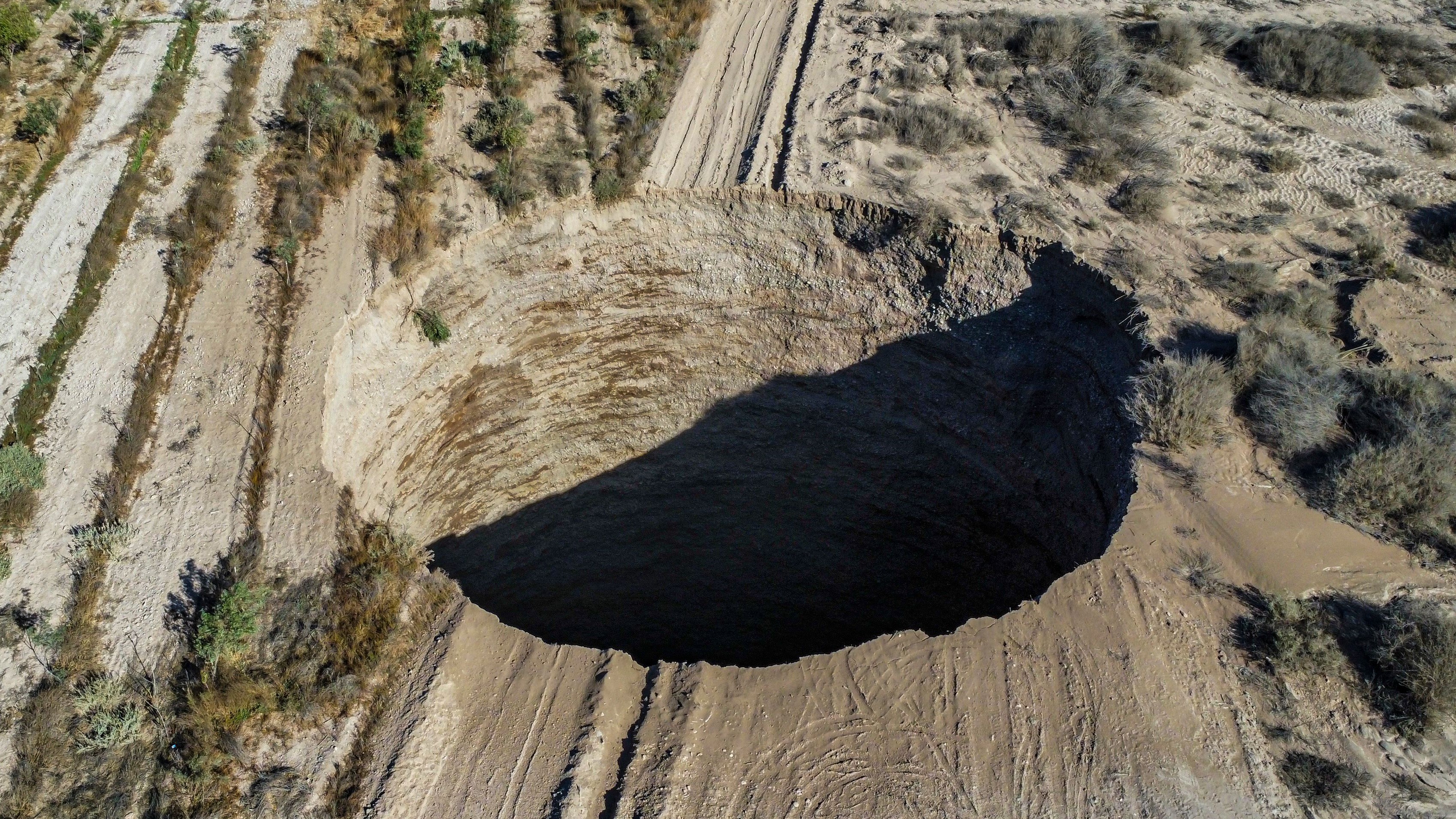
Sinkholes are wonders of nature: They can appear suddenly and be enormous, sometimes large enough to swallow whole buildings.
Sinkholes form when the rock beneath the surface, such as limestone, can naturally be dissolved by the groundwater within it. As the rock dissolves, caverns develop. When these caverns get so big that the land above can no longer support them, the surface collapses.
Some sinkholes have been found to contain their own ecosystems — and may even harbor undiscovered plant and animal species. In 2022, scientists discovered a 630-foot-deep (192 meters) sinkhole containing an ancient forest and dense overgrowth in southern China.
Here are some of the biggest known sinkholes on Earth, as measured by depth.
1. Xiaozhai Tiankeng, China
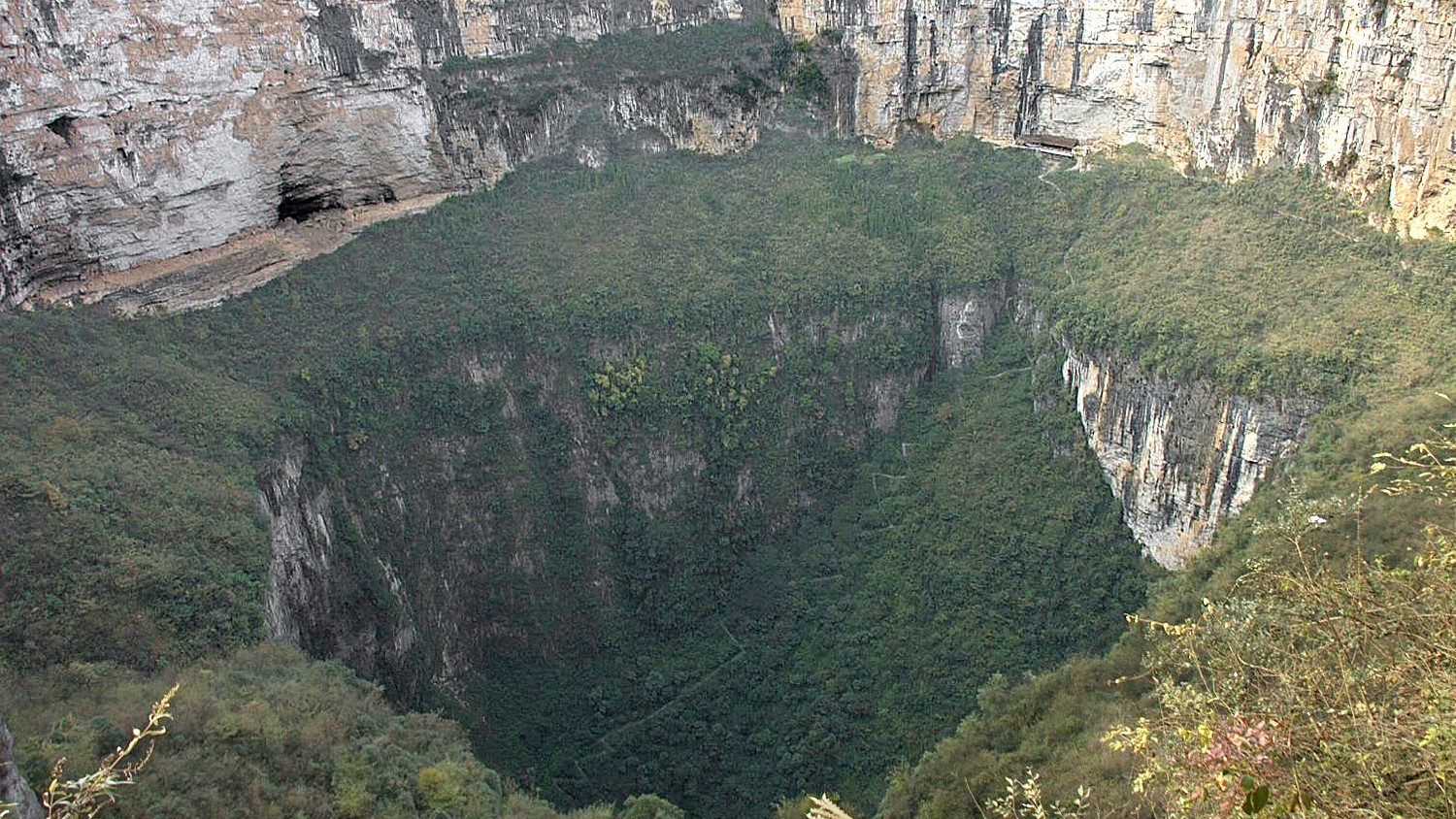
Located in Fengjie County in China, Xiaozhai Tiankeng — which roughly translates to "the Heavenly Pit" — is the world's deepest sinkhole. It is 2,172 feet (662 meters) deep and was formed over the limestone Difeng cave, which was carved out by an underground river, which still flows beneath the sinkhole.
2. Crveno Jezero (Red Lake), Croatia
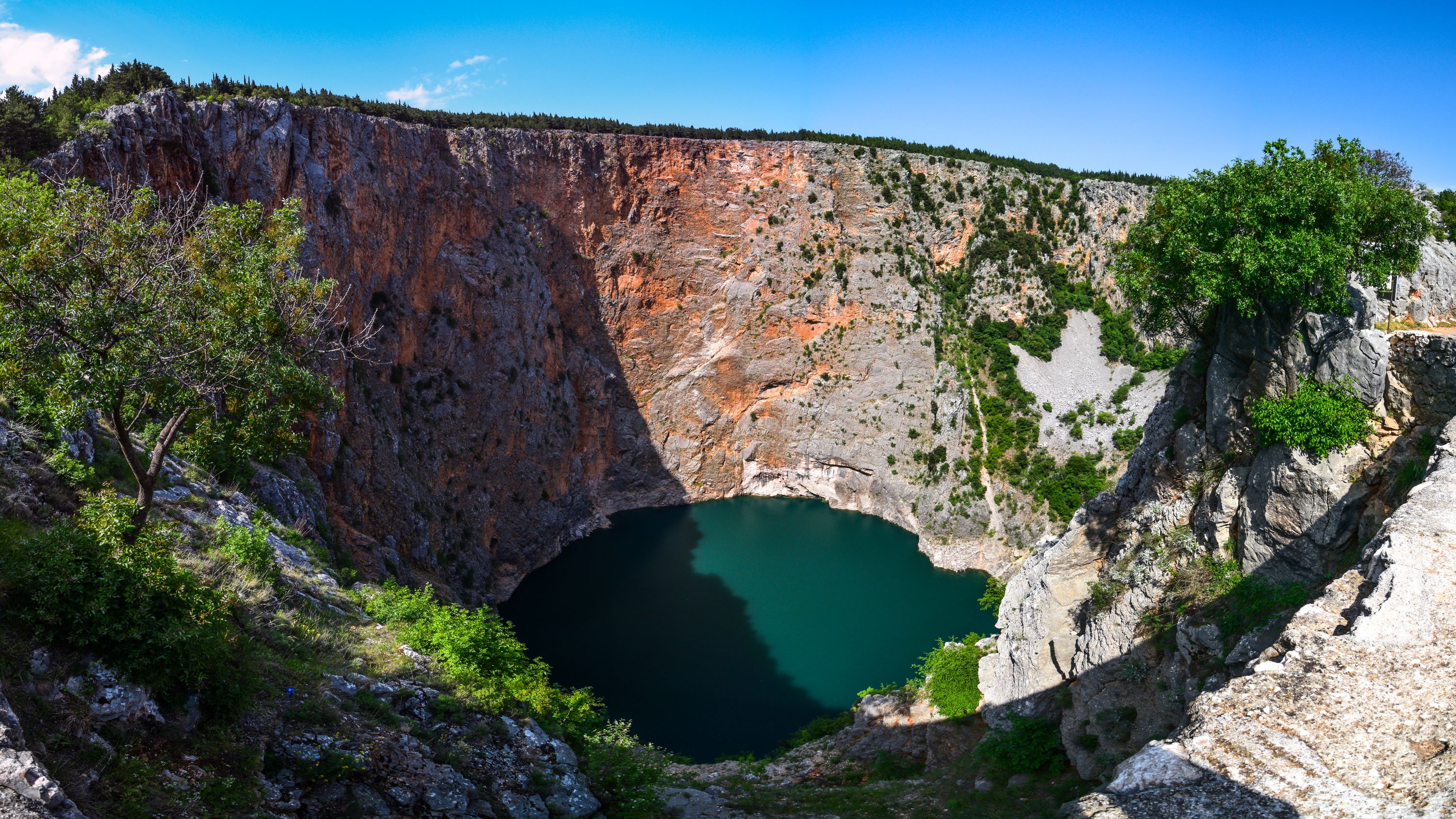
Red Lake is a sinkhole containing a karst lake — a lake formed as the result of a collapse of caves near the city of Imotski, in Croatia. Although the lake is blue, it is named after the surrounding reddish-brown cliffs, which are stained by iron oxides. The sinkhole has a depth of around 1,740 feet (530 m) and contains several species of fish, including the endangered spotted minnow (Delminichthys adspersus) and the Imotski spined loach (Cobitis illyrica).
Related: Colossal cave in Mexico that formed 15 million years ago is even more enormous than we thought
Sign up for the Live Science daily newsletter now
Get the world’s most fascinating discoveries delivered straight to your inbox.
This region is also home to Blue Lake, another sinkhole with a total depth (from the rim) of about 720 feet (220 m).
2. Sima Humboldt, Venezuela
Sima Humboldt is an enormous sinkhole located on the summit of Cerro Sarisarinama, a flat-topped mountain in Bolívar State, Venezuela. It has a depth of 1,030 feet (314 m) and contains a forest area at its base. Another giant sinkhole, called Sima Martel, is located around 2,300 feet (700 m) from the rim of Sima Humboldt.
4. Dragon Hole; Paracel Islands, South China Sea
The Dragon Hole — also known as the Yongle Blue Hole or the "eye" of the sea — is a 984-foot-deep (300 m) blue hole near the Paracel Islands in the South China Sea. It was discovered in 2016 and is the deepest known blue hole in the world. Blue holes are large, undersea vertical caves or sinkholes found in coastal regions. They often contain a variety of marine life, ranging from corals to sharks.
5. Taam Ja' Blue Hole, Mexico
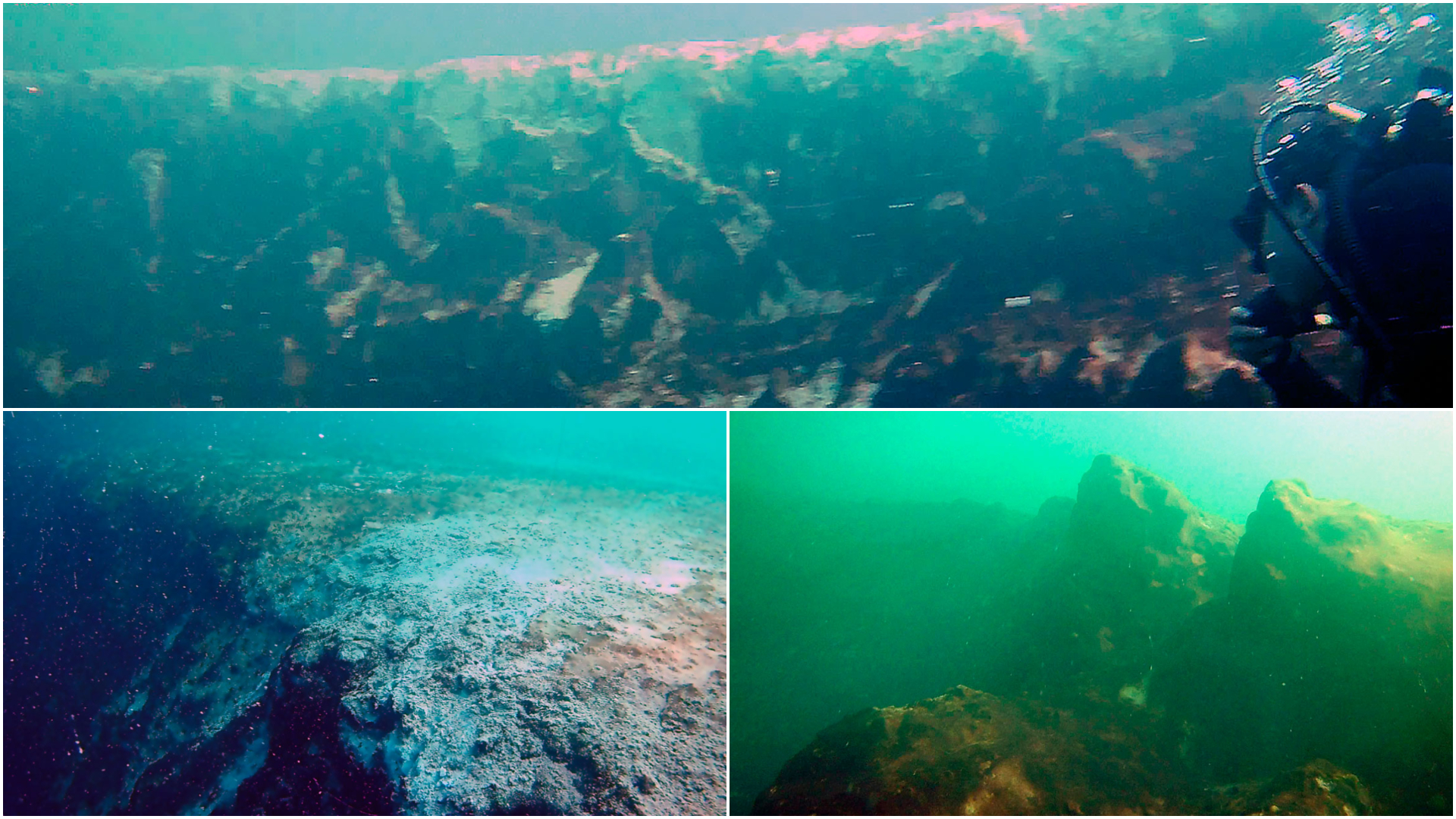
The second-largest blue hole in the world — Taam ja', which means "deep water" in Mayan — was discovered off the coast of Mexico's Yucatán Peninsula in 2021, although details of the sinkhole just emerged this year. The giant, underwater cavern, located in Chetumal Bay, is around 900 feet (274 m) deep. It has steep sides with slopes of almost 80 degrees, and the mouth of the cavern sits around 15 feet (4.6 m) below sea level.
6. Berezniki (The Grandfather), Russia
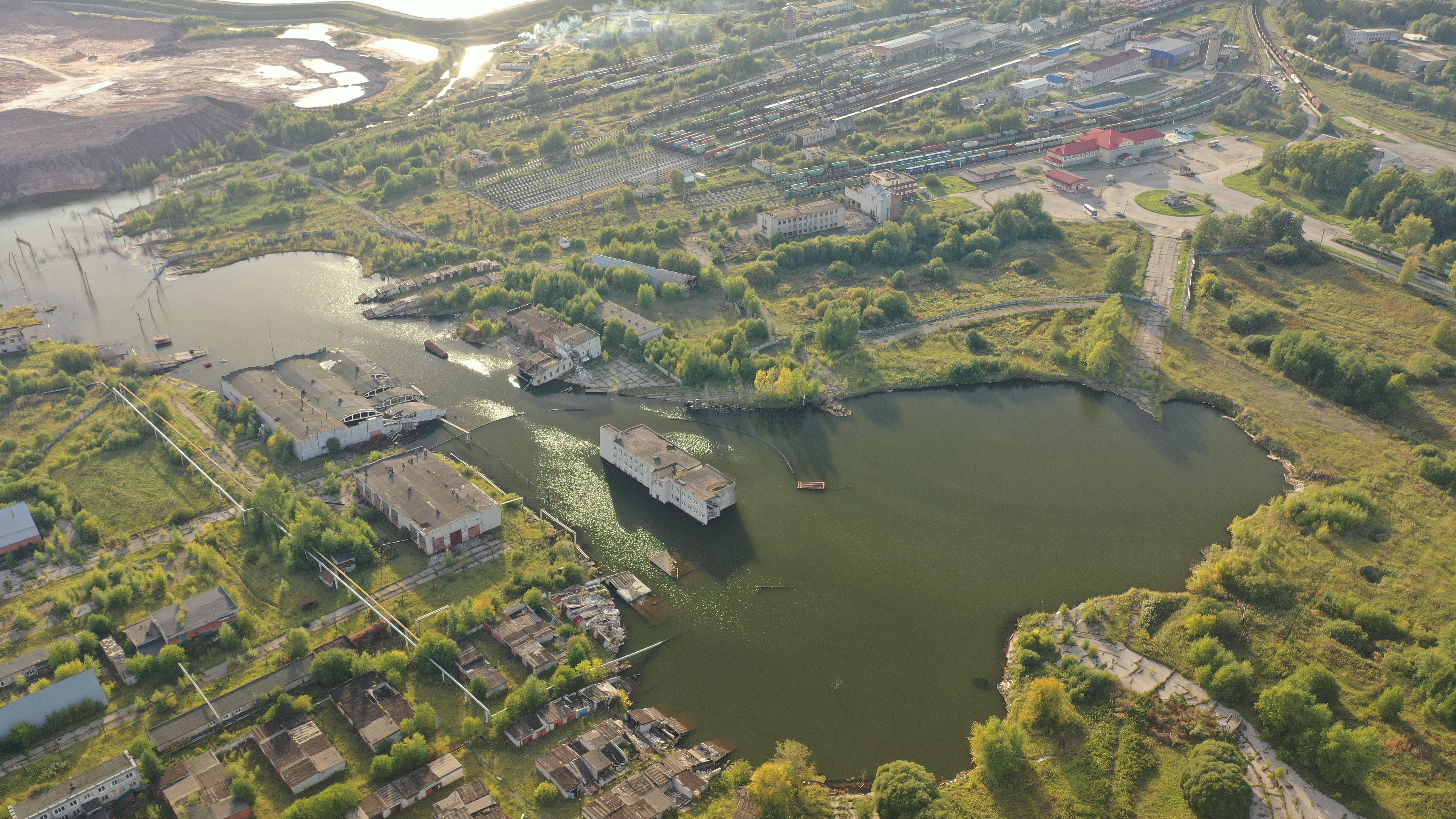
Most sinkholes are formed naturally, but some are created as a result of human activity. The city of Berezniki, Russia, in the Ural Mountains, has been plagued by sinkholes for decades. It started as a labor camp and was built over several Soviet-era potash mines, where the extraction of salts containing potassium destabilized the land, leading to collapses. The largest sinkhole —nicknamed The Grandfather — opened in July 2007 and is estimated to be 780 feet (238 m) deep.
7. Bayou Corne, Louisiana
The Bayou Corne sinkhole in Louisiana was discovered in 2012 after months of unexplained seismic activity in the area. It formed as a result of a collapsed underground salt dome cavern that was connected to a nearby industrial well, and led to the evacuation of the town of Bayou Corne. As of 2014, it was at least 750 feet (229 meters) deep.
8. Dean's Blue Hole, Bahamas
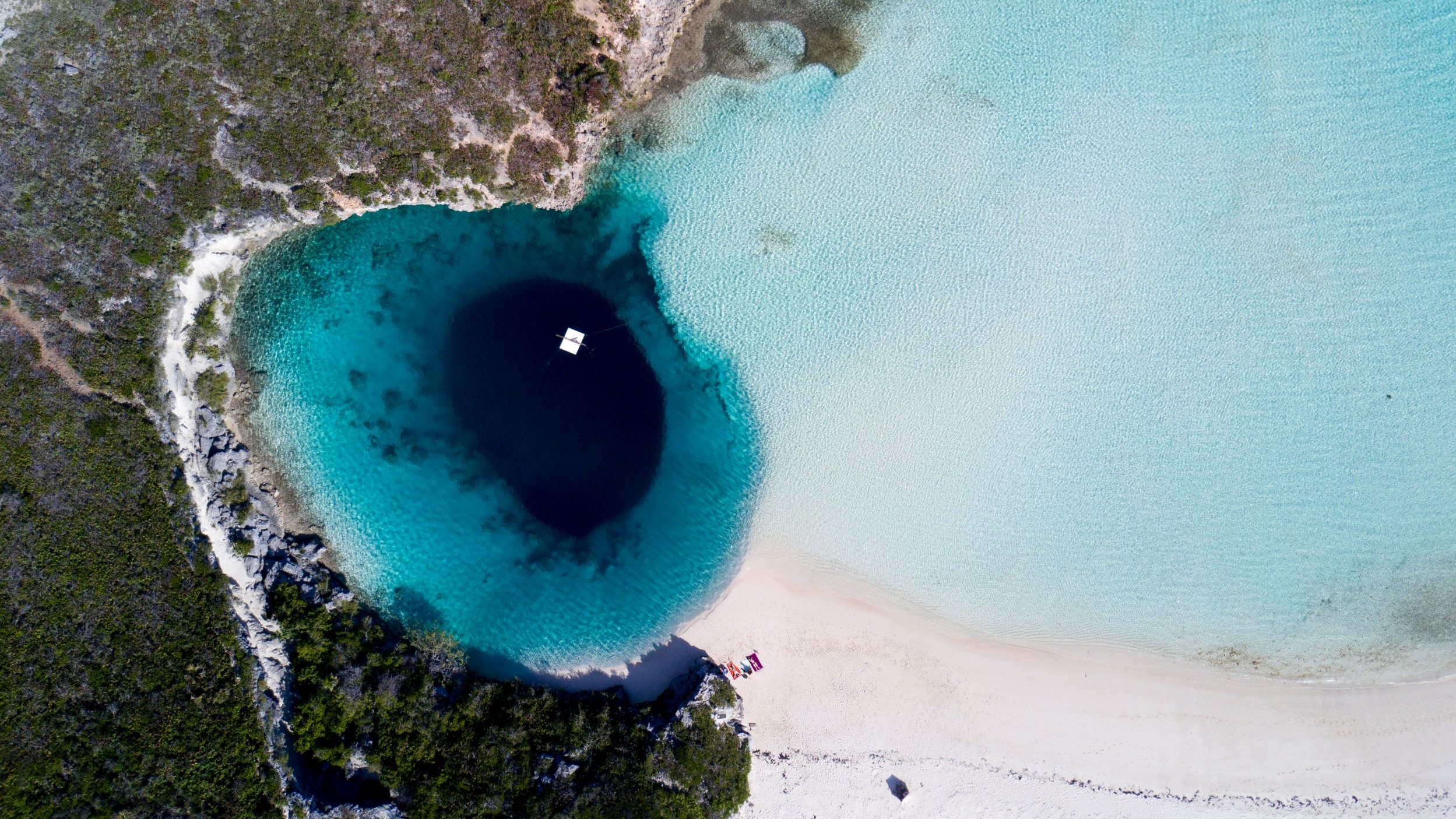
Dean's Blue Hole, which has a depth of 663 feet (202 m), is a blue hole located just off Long Island in the Bahamas. The sinkhole — which is enclosed by rock, a lagoon and a white beach — is a free-diving hotspot. There are multiple passages running from the main blue hole leading to cave systems and rooms.
9. Copper mine sinkhole, Chile
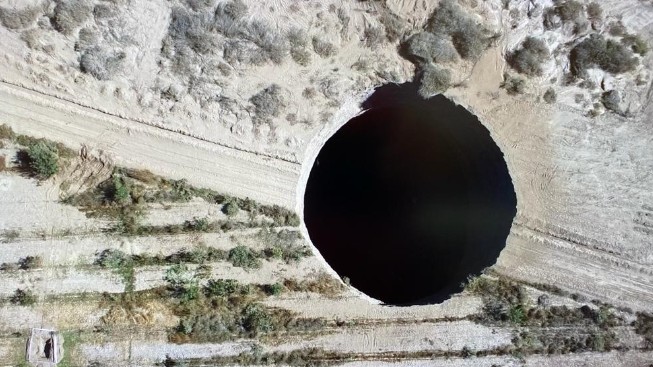
An enormous sinkhole opened up in Chile in July, 2020. It measured 104 feet (32 m) in width and was estimated to be about 656 feet (200 m) deep. The sinkhole appeared on the site of the Alcaparrosa copper mine, owned by the Canadian Lundin Mining company.
10. Mystery sinkhole, China
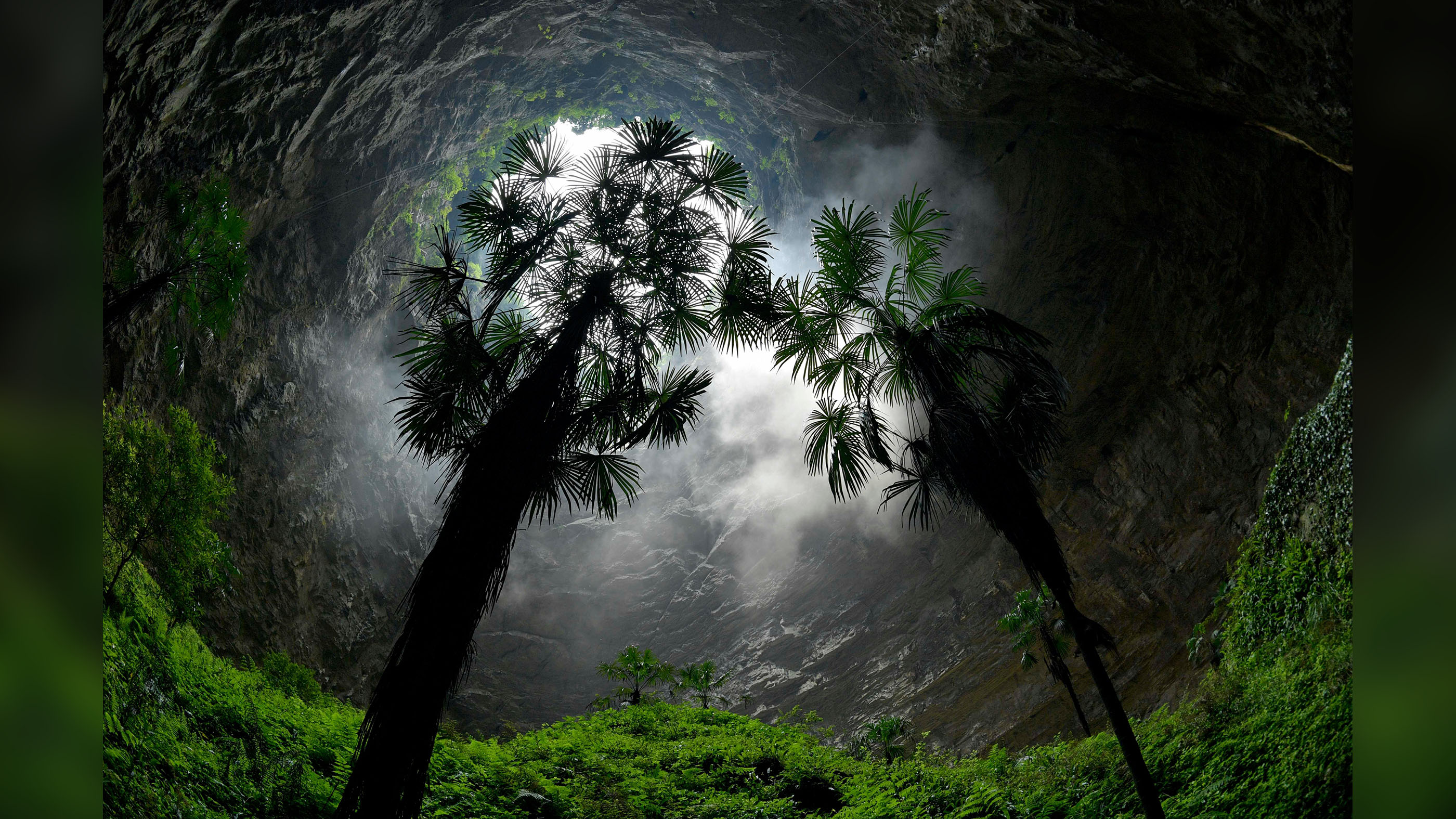
In 2022, scientists in China announced the discovery of a 630 feet (192 m) deep sinkhole in the Guangxi Zhuang Autonomous Region. The sinkhole was found to be 1,004 feet (306 m) long and 492 feet (150 m) wide, and was so large it had a forest growing inside it.
"I wouldn't be surprised to know that there are species found in these caves that have never been reported or described by science until now," Chen Lixin, who led the cave expedition team, told China's Xinhua news agency.
11. Qattara Depression, Egypt
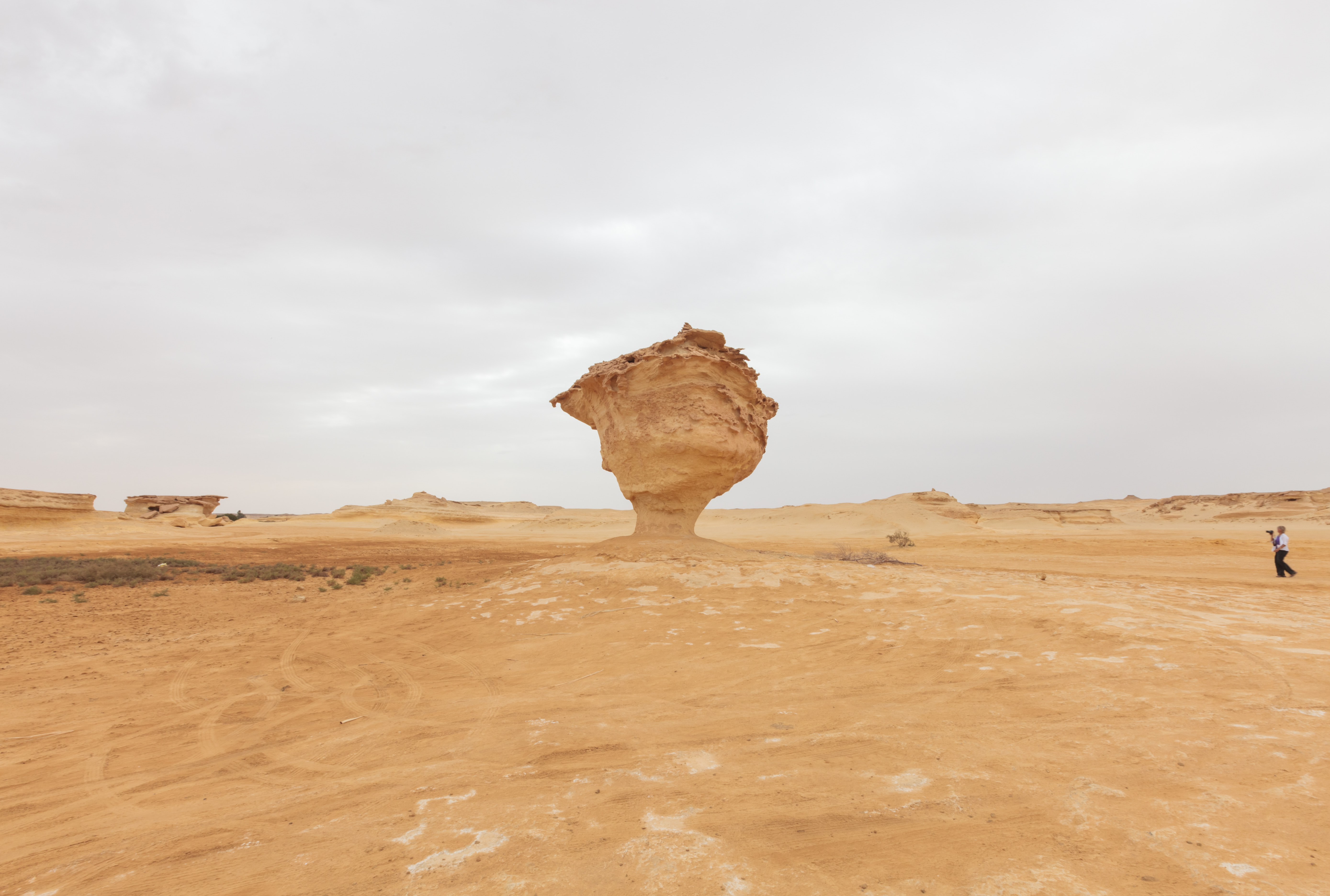
The Qattara Depression is a lowland area covering 7,500 square miles (19,400 square kilometers) — roughly three times the size of Delaware — in northern Egypt. The sinkhole formed over thousands of years through weathering and wind erosion. It reaches a depth of 436 feet (133 m) — the second lowest point in Africa, behind Lake Assal in Djibouti — and is covered with salt pans, sand dunes and salt marshes.
12. Great Blue Hole, Belize

The Great Blue Hole is a marine sinkhole off the coast of Belize. It is 407 feet (124 m) deep, with a surface area of 706,470 square feet (70,650 square meters). It is a part of the larger Belize Barrier Reef Reserve System, a UNESCO World Heritage site.
In 2019, a team of explorers — including Fabien Cousteau, the grandson of filmmaker and explorer Jacques Cousteau who first made the sinkhole famous, and Richard Branson — mapped out the floor of the Great Blue Hole using soundwaves. They discovered new stalactites — mineral growths that look like icicles — as well as plastic bottles, highlighting the problem of ocean pollution.
13. The Devil's Sinkhole, Texas
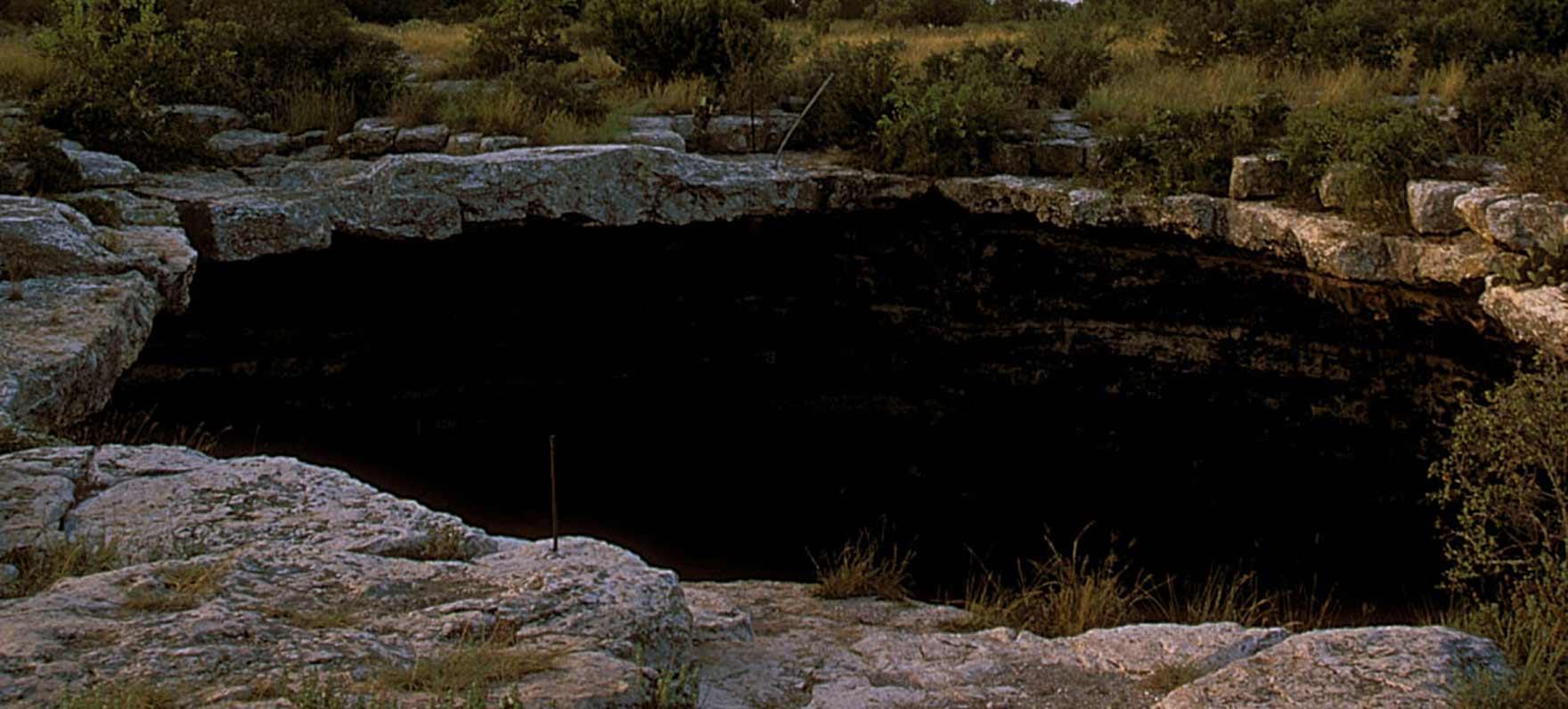
In Texas, there lies a bell-shaped formation called the Devil's Sinkhole, which has a depth of 350 feet (107 m). Ranchers discovered the cave in 1876, and it has since become a hotspot for geological research. The sinkhole contains many cave passages that are home to one of the largest colonies of Mexican free-tailed bats (Tadarida brasiliensis) in Texas. On warm nights, around 3 million bats emerge from the sinkhole in search of food.
14. Hole of Macaws, Brazil
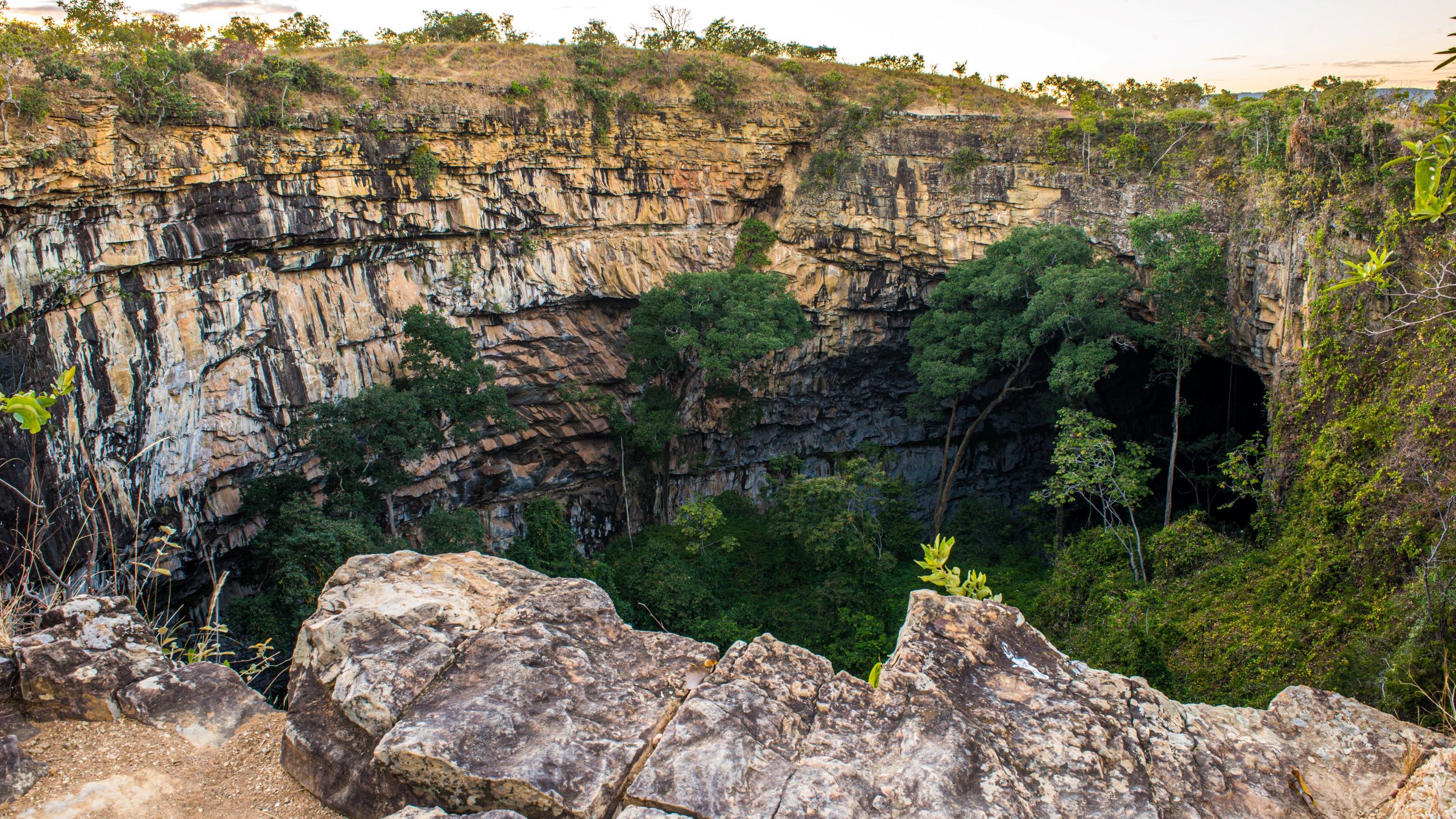
The Buraco das Araras — or Hole of Macaws — is one of the largest sinkholes in South America. It is 328 feet (100 m) deep and formed as the result of erosion of limestone rocks beneath the surface. It's name comes from the large number of birds living there, with the sinkhole serving as a breeding ground for the scarlet macaw (Ara macao).
Editor's Note: This article was updated at 12 p.m. E.T. to note correct a comparison between the size of the blue hole and Alaska. The hole is not bigger than Alaska.

Lydia Smith is a health and science journalist who works for U.K. and U.S. publications. She is studying for an MSc in psychology at the University of Glasgow and has an MA in English literature from King's College London.











